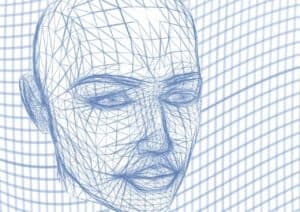The first week of product design used to be messy. Post-its. Whiteboards. Debates. A figma wireframe that changed five times before anyone touched a user.
Now? It starts with a prompt.
One sentence. A few keywords. Maybe an outline. And suddenly – layouts, user flows, and button copy appear.
It’s not magic. But it’s fast. And for early-stage teams building a minimum viable product, it’s changing what that first week actually looks like.
Before AI, Design Was a Bottleneck
Ideas were cheap. Designs weren’t.
You’d sketch, refine, review, revise. Developers waited. Founders got antsy. And user testing? That usually came much later – if it happened at all.
AI hasn’t replaced designers. But it has given them a head start. Now, the messiness lives in the iteration, not the blank page.
What Can AI Actually Generate in Week One?
A lot more than people expect.
1. User Flows
Prompt: “A mobile app that helps freelancers track time, send invoices, and get paid.”
The AI might suggest:
- Onboarding screens
- Dashboard with tracked hours
- Button to send invoice
- Payment integration flow
You’ve got something usable before you’ve even named the app.
2. Layouts
Tools like Framer AI, Uizard, or Galileo can generate basic layouts from prompts. Want a dashboard? Say so. Need a booking calendar? Type it. Now you have a skeleton to build on.
3. Microcopy
No more Lorem Ipsum. AI writes onboarding tips, button labels, even empty state text. Is it perfect? No. Is it testable? Absolutely.
Why This Changes the First Week
Speed changes priorities. If you can go from idea to prototype in hours, you can test on day two. You don’t need approval chains, dev buy-in, or weeks of planning.
Now the question isn’t “What should we build?” It’s “Which version of this do users like more?”
For teams doing IT consulting, especially in early product discovery or innovation projects, this fast design cycle makes early decisions way easier to validate.
How Teams Are Actually Using It
It’s not just solo founders hacking together tools.
Larger teams are now:
- Replacing design sprints with AI-generated concept boards
- Creating 3–4 prototype versions in a week
- Running quick user tests with copy they didn’t write
- Using AI to localize and personalize content instantly
Product folks give feedback earlier. Designers iterate faster. Developers stay focused on the backend instead of chasing copy edits.
This isn’t theoretical. It’s showing up across SaaS, marketplaces – even in regulated fields like fintech and blockchain.
What Still Needs a Human
AI gets you started. But it can’t:
- Choose the right problem to solve
- Know your users’ real context
- Handle edge cases
- Balance aesthetics with UX
- Prioritize features based on impact
That’s the human work. But now it starts sooner – because you’re not stuck setting up scaffolding for three days first.
Companies like S-PRO see this shift in how MVPs are scoped. Projects move quicker, but with more validation up front. It’s not just “build faster” – it’s “learn faster.”
A Few Tools Worth Testing
You don’t need to use everything. But if you want to try this approach, here’s where people start:
- Framer AI: Quick landing pages from prompts
- Uizard: Sketch-to-UI generator
- Galileo AI: Text-to-design for mobile/web apps
- Jasper / Copy.ai: Microcopy, CTAs, onboarding text
- Notion AI: Early planning, documentation, idea exploration
They won’t replace your team. But they might help you skip the worst part of starting – the blank screen.
How to Use AI in Week One (Without Getting Lost)
- Start with a single use case. Don’t try to build the whole product. Pick one key task.
- Let the AI create v1. Accept that it’ll be messy. That’s fine. Just move fast.
- Test with users immediately. Share screenshots. Run a click-through. Ask questions.
- Iterate based on reactions – not assumptions. This is where human insight kicks in again.
Final Word
The first week of product design doesn’t need to be a grind. Not anymore.
With the right prompts and a few AI tools, teams can turn ideas into prototypes in a day. Not to ship – but to learn. To test. To move.
That speed gives founders breathing room. It helps product leads get early insight. And it saves designers from burning hours on wireframes no one will ever use.
In the end, it’s not about replacing the process. It’s about shifting where the energy goes.
Less setup. More signal. And faster proof that you’re building something real.





